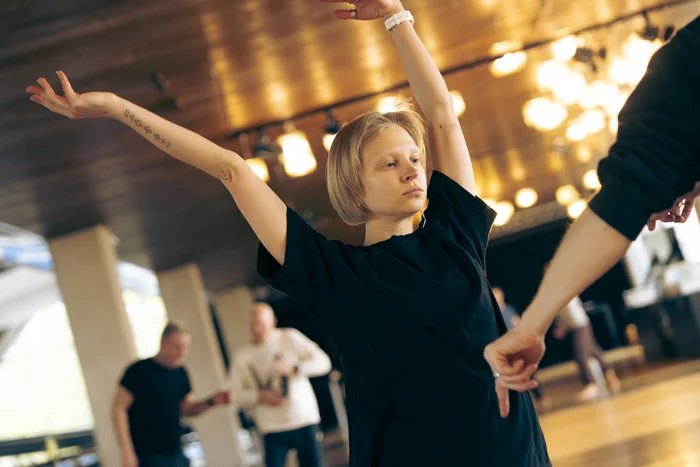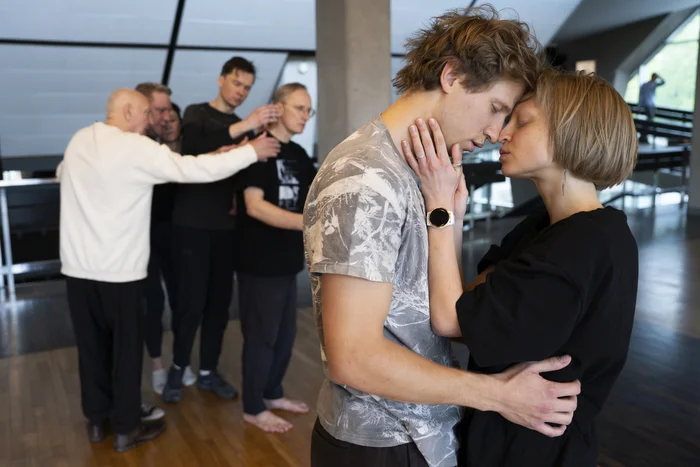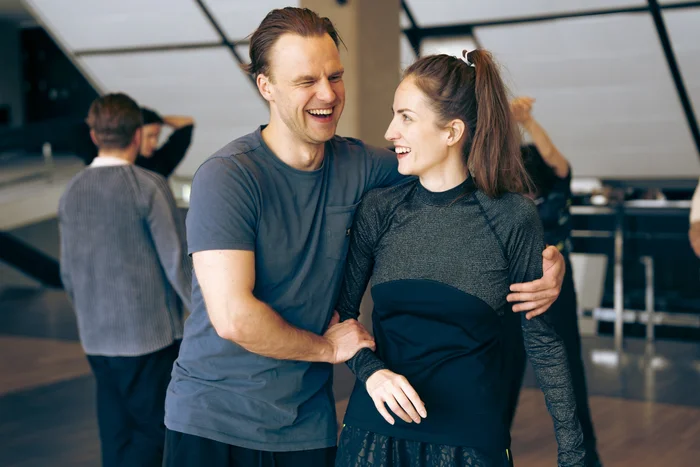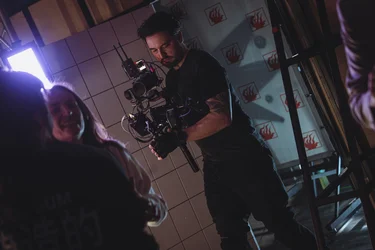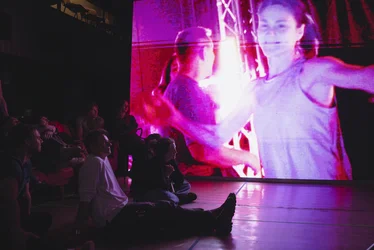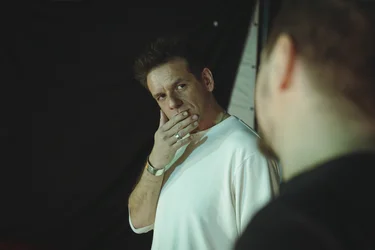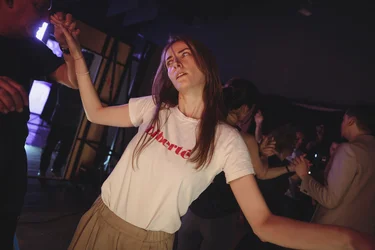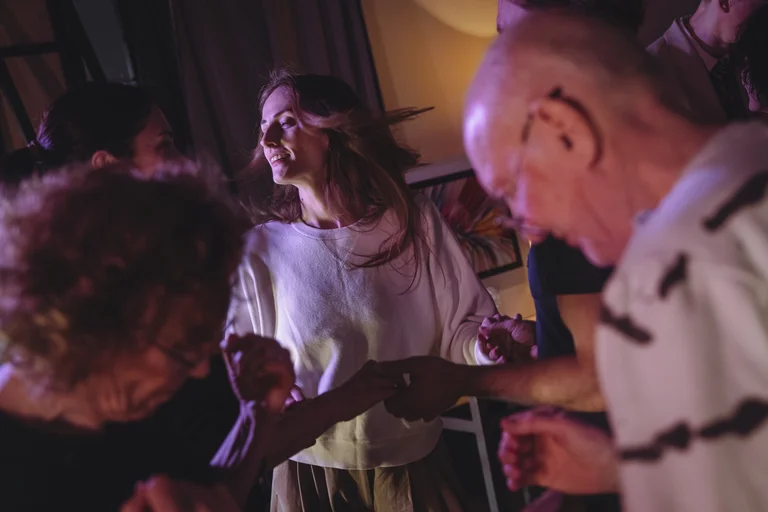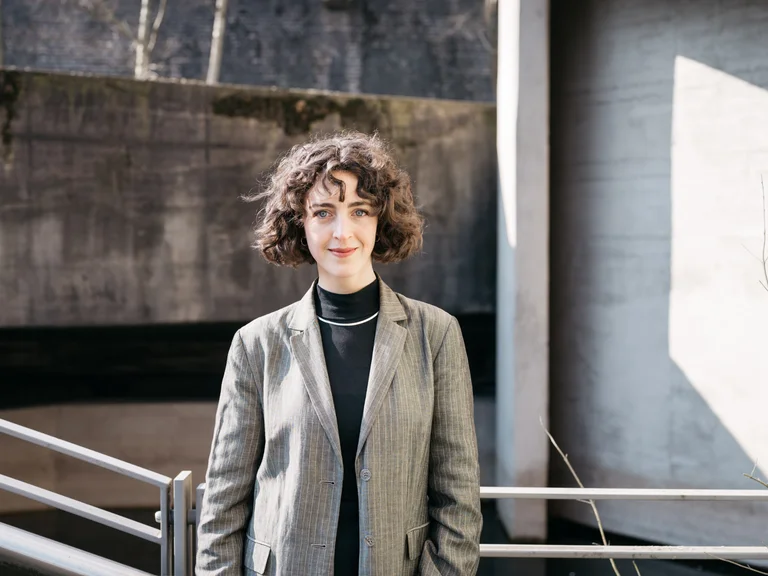
Dancing with Machines
Behind the Scenes of “Oracle”
It’s a rainy spring morning in April at the Dailes Theatre in Riga, the temporary home of the Oracle ensemble. The rehearsal foyer hums with energy. One moment, the cast is deep in swing dance steps, limbs fluid and joyful. The next, they shift into slow motion, each gesture stretched across time. Later, a sequence rewinds itself as bodies move in reverse. These qualities are practiced one by one. In a final improvisation, they collide – a vibrant collage of styles and rhythms, a preview of the kinetic language shaping this new theatre piece. At the center of this process is choreographer Paweł Sakowicz. But his role goes far beyond traditional choreography.
„It’s not just moving people. It’s also moving images, moving sets, moving people according to the set, to the audience, to the dramaturgy of the piece.“
Movement here is architecture, storytelling, camera choreography.
Oracle, directed by Łukasz Twarkowski and written by Anka Herbut, will premiere at Ruhrtriennale 2025. Inspired by the legacy of Alan Turing, it explores the boundary between human and machine, the ethics of technology, and the emotional tension between precision and error. The production blurs theatre and cinema: cameras glide through scenes in real time, their presence fully visible. “We don’t pretend the camera operators are invisible,” says Paweł. “They’re one of the main performers. I even support them during rehearsals, giving them choreographic tasks.” This attention to every moving part – human and mechanical – creates a layered stage presence where technology is woven into the performance itself.
Each morning in Riga, Paweł and the cast train movement techniques: swing from the 1940s, slow-motion sequences, symmetrical formations, reversed actions. “We give names to the qualities,” he explains. The movement work draws on both historical and contemporary sources. Swing dance nods to the wartime era of Turing, while also being twisted into something new – repurposed for the present, reframed by context, sometimes sped up into jive, sometimes made eerie by repetition. These sessions prepare the ensemble to work quickly and precisely later, especially in scenes captured by multiple cameras, often in long, continuous takes.
Precision is key but never rigid. “I really love precision,” Paweł admits, “but I’m also aware that some things do not work. And as we’re dealing with themes of artificial intelligence becoming more human, the notion of mistake is actually quite beautiful.” In a piece where actors interact with multiple cameras and navigate a constantly shifting set, the choreography must be both exacting and alive – not flawless, but responsive.
„Even though the piece plays with machine-like movement, it always begins with the body.“
And yet, for all its technical complexity, Oracle never loses its human core. “I love working with humans,” Paweł says. “Even though the piece plays with machine-like movement, it always begins with the body.” His choreography builds illusion: twelve actors feel like many more, as they switch roles, echo mechanical rhythms, and explore what it means to be seen – by an audience, by a lens, by a system.
Now, in the camera-lit rehearsal room, the actors begin testing what their bodies can do within the frame – how each gesture transforms once seen through the lens. There’s a quiet thrill in the room, as movement and technology start to reveal effects that would otherwise be imperceptible. Choreography here isn’t just for the stage – it’s for the eye of the machine.
About the author
Teresa Bernauer is a German-Portuguese dramaturge and curator. She is the theatre dramaturge at the Ruhrtriennale 2024–26. Previously, she worked at Künstler*innenhaus Mousonturm, co-founded the Nocturnal Unrest Festival, and coordinated the outreach project Places to See at MMK Frankfurt.

